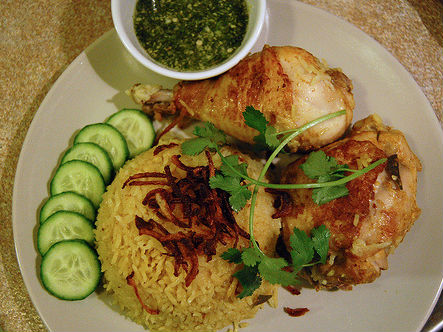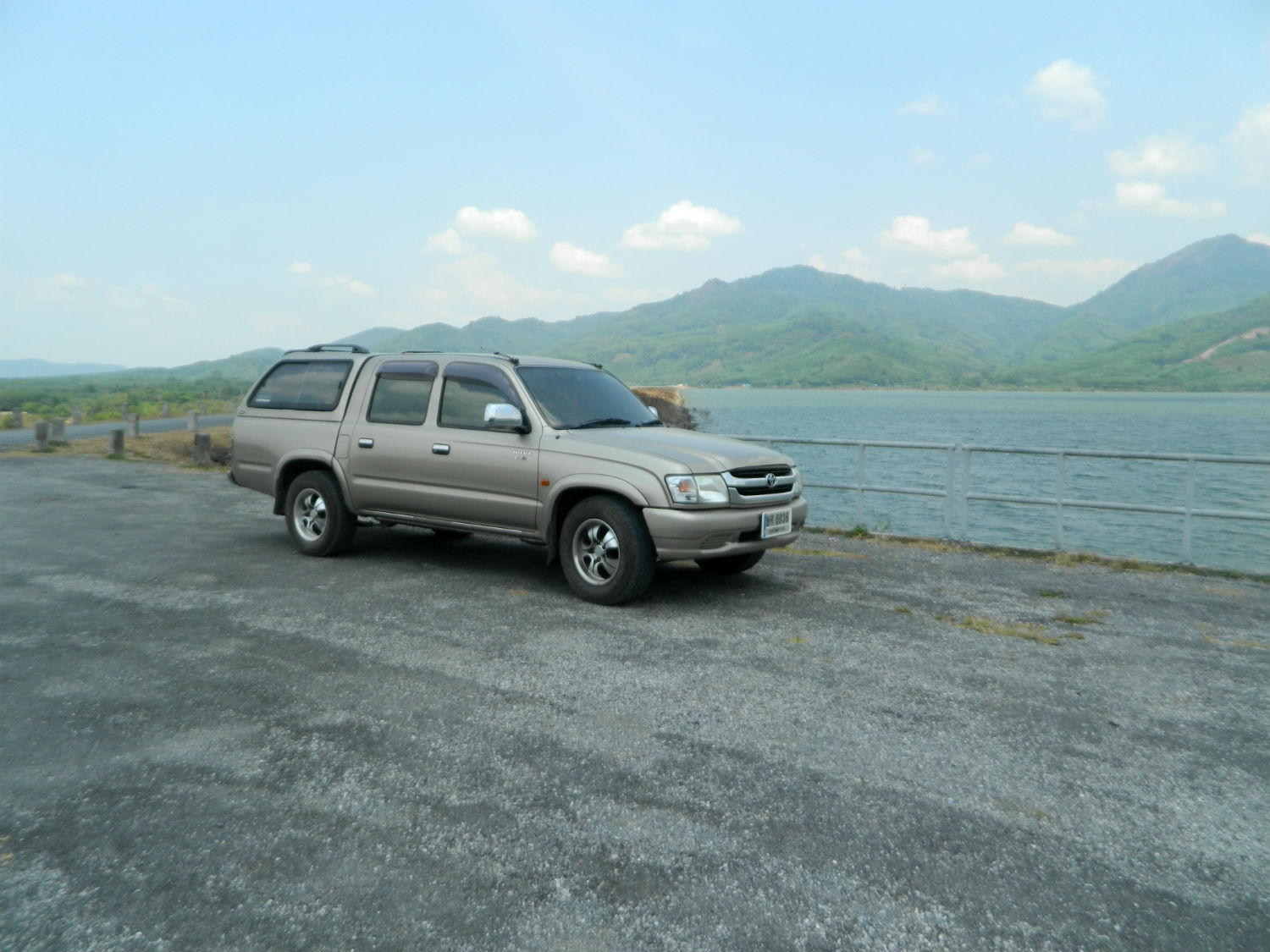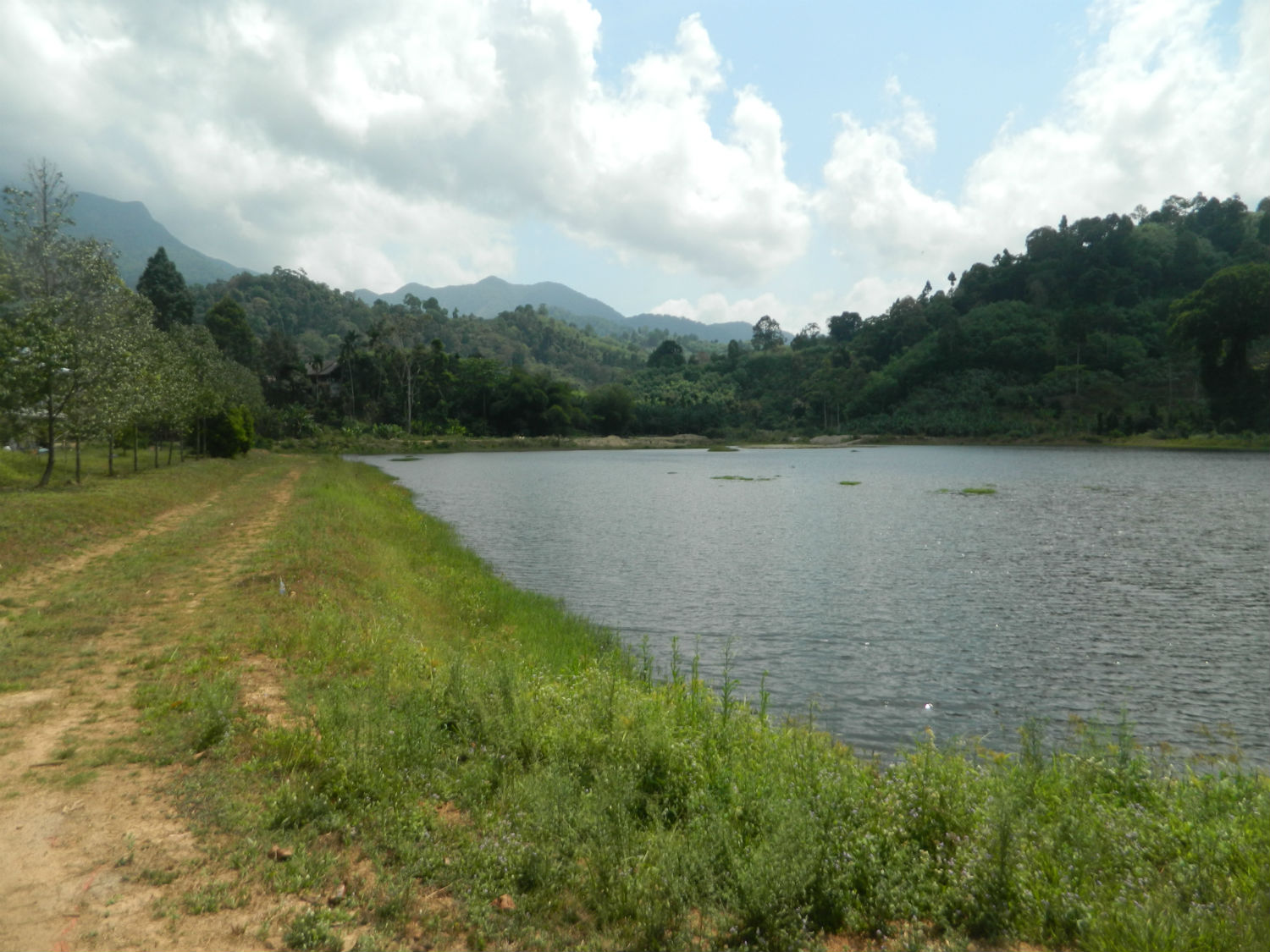|
|

|
Conclusion
Conclusion……..The Nakhon Si Thammarat tour followed directly from the Western Province tour and was planned on account of the fact it was a province I’d only ever passed through, being one of the more remote provinces from Bangkok. From a simple idea I started to do some research and realised the province was rich in history even to the extent of being the cradle of civilisation in Thailand. Yet the province also has quiet sandy beaches and high-peaked mountains. It seemed to have everything for the traveler and I gave it respect by allocating 8-9 days entirely to the province. My intention was also to take time off touring and just relax if I could.
When I arrived in Khanom, relaxing was exactly what I did but I just couldn’t come all this far to stay in only one town. It was important that I visited the provincial capital asap but first I explored the coastline while travelling south. In Nakhon Si Thammarat I spent the best part of two days in the city with the prime objective of visiting historical, cultural and religious sites which dominate the city. From here I travelled further south to the provincial border and spent one amazing day in the north of the adjoining provinces of Songkhla and Phattalung. This excursion caused me to add these two provinces to my wish list of future tours. With time running out I used the remainder of the time in several mountain districts in the west of the province and managed to squeeze an extra day into the tour. The tour was another outstanding success with no issues but at the cost of too few of those magic moments simply lazing around on the beach! The secret of that still eludes me.
Regarding the cost, obviously the huge distance from Bangkok, around 650 kms, meant the fuel costs were at least double that of the Western Province tour. The accommodation was more expensive too, averaging 725 baht. To keep within budget, food was often consumed at small local restaurants or street kitchens. When something mid-range was found, it was still incredible value really, Apart from the admission fee at NST National Museum, very little else was spent.
Following these last two tours there will be ongoing work to add reviews, summaries and not least photographs to my website. Given the time that’s taken on other tours it could be well into summer before that can be completed but there are no plans in place for tours in the near future.
When I arrived in Khanom, relaxing was exactly what I did but I just couldn’t come all this far to stay in only one town. It was important that I visited the provincial capital asap but first I explored the coastline while travelling south. In Nakhon Si Thammarat I spent the best part of two days in the city with the prime objective of visiting historical, cultural and religious sites which dominate the city. From here I travelled further south to the provincial border and spent one amazing day in the north of the adjoining provinces of Songkhla and Phattalung. This excursion caused me to add these two provinces to my wish list of future tours. With time running out I used the remainder of the time in several mountain districts in the west of the province and managed to squeeze an extra day into the tour. The tour was another outstanding success with no issues but at the cost of too few of those magic moments simply lazing around on the beach! The secret of that still eludes me.
Regarding the cost, obviously the huge distance from Bangkok, around 650 kms, meant the fuel costs were at least double that of the Western Province tour. The accommodation was more expensive too, averaging 725 baht. To keep within budget, food was often consumed at small local restaurants or street kitchens. When something mid-range was found, it was still incredible value really, Apart from the admission fee at NST National Museum, very little else was spent.
Following these last two tours there will be ongoing work to add reviews, summaries and not least photographs to my website. Given the time that’s taken on other tours it could be well into summer before that can be completed but there are no plans in place for tours in the near future.
 Southern Cuisine........It is beyond my resources here to compile a full list of where I stopped to eat on this tour but I am able to give general advice as to what you can expect. Most advice relates to dining in general in Thailand but there are inevitably regional differences and Nakhon Si Thammarat is no exception. For my general advice click here The food types found in Southern Thailand are much different to that found in north and central Thailand. The major differences reflect not only the availability of local ingredients but also with religion and culture. Incredible flavours are produced with local spices but in the main the further south you go in Thailand the more exposed you will be to Muslim cuisine. I have to briefly mention Halal food which may be confusing to some. Muslims never eat pork, of course, but Halal food is food prepared in a different way to that in the West with particular guidelines for animal slaughter. Non Muslims can eat Halal food but not the other way around. This leaves us free to take advantage of some amazing dishes. As this website cannot possibly compete with a Muslim cookbook I can only select one dish that is popular all over Thailand. It’s known as kow mok gai. The gai (usually a chicken leg) is prepared in an aromatic curry sauce. The sauce uses yellow curry powder as its base, the yellow colour comes from cumin which is widely available fresh in the area. This colouring is usually applied to the rice as well, distinguishing it from the rest of Thailand. As with my general advice please do experiment for some amazing curries. At least food prepared in this way I regard as less likely to result in problems with food hygiene. My general advice on dining in Thailand also applies, click here. |
 During the Nakhon Si Thammarat tour I rented a vehicle from my companion’s friend. The Toyota Hilux Cariboy was a trusty but rather old model but I eagerly accepted it as I knew it would get me around Thailand. I had intended to log the mileage but that task got neglected. All I can say is that I clocked well over 2000 kilometres and there didn’t seem to be pressure on the budget despite the motor not being the most efficient. I doubt if I paid more than 500 baht per day on average despite the huge distance from Bangkok. It is most likely that this vehicle will be used on future tours. |
 Nakhon Si Thammarat Province They say there are only two seasons in the south of Thailand; wet and dry. March is one one the driest months and one of the most pleasant months to be in the area. In contrast to the central plains of Thailand the heat doesn't seem so oppressive and humid. No doubt sea breezes take the edge of the temperatures which in other respects are little different. I searched for a photograph (left) to find one with cloud. I'm sorry this is the best I can do. Daytime temperatures were consistently above 30 degrees C. with nights around 25 C. |